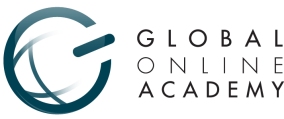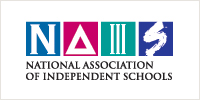 This August, the US Department of Education is sponsoring Connected Educators Month to highlight “online communities of practice in education.” The Connected Educators site now features more than 80 online education communities to peruse, a blog, a draft report to comment on, and a no-doubt-depressing-for-many K-12 Internet Broadband Speed Test to try. Kudos to the US Department of Education for walking the walk with this online community of online communities: building these communities is not easy. A good way to understand promising models and practices in the field is real-time, hands-on engagement.
This August, the US Department of Education is sponsoring Connected Educators Month to highlight “online communities of practice in education.” The Connected Educators site now features more than 80 online education communities to peruse, a blog, a draft report to comment on, and a no-doubt-depressing-for-many K-12 Internet Broadband Speed Test to try. Kudos to the US Department of Education for walking the walk with this online community of online communities: building these communities is not easy. A good way to understand promising models and practices in the field is real-time, hands-on engagement.
Another person trying to understand promising models in ed-tech is Audrey Watters, who has a timely Hack Education post about GitHub. Setting aside for the moment the fact that the $100 million investment by Andreessen Horowitz model is, indeed, a fine model for ed-tech start-ups; there is an informative quote by investor Peter Levine in the press release: “GitHub organizes projects around people rather than code.”
Audrey explains further why GitHub worth a look and its “people-centric” structure is more than token ed-tech talk:
I heard GitHub co-founder and CEO Tom Preston-Werner speak at Y Combinator’s Startup School back in 2010, and the message he delivered was profoundly different than that of many of the speakers at the event who told tales of seed funding and “super angels.” While I refuse to believe that everyone in the tech industry “does it for the money,” it’s sometimes hard to see otherwise in the exuberance and the mythology that Silicon Valley perpetuates.
In lieu of what he identified as the pressures on startups to “optimize for money,” Preston-Werner’s talk — and his philosophy for running GitHub — focused on “optimizing for happiness.”
Audrey sees two cultures needing to come into better alignment:
I do wonder how VCs’ demand for that “quick success or quick failure” works (or doesn’t work) for education startups. It isn’t simply that educational institutions are slow to adopt new products and/or slow to change; it’s that the education of each and every one of us is a slow process too – a lifetime of learning.
And I fear if we choose to “optimize for money” – something that the latest flurry of interest in ed-tech startups is starting to look an awful lot like – we will neglect to optimize both for happiness and for learning.
There is a parallel lesson to be learned between those building tools and platforms to connect educators and students, and those in the international education and exchange community. Our shorthand for the place where new technologies can enhance, deepen and expand world history, geography, current events, world music and dance programs, study abroad and language programs, among others, is “Exchange 2.0.”
 A model Exchange 2.0 community that may be a promising model for ed-tech start-ups is the Global Education Conference, which Lucy Gray and Steve Hargadon launched in November 2010. It’s now 11,000 strong and is featured on the Connected Educators site. Like GitHub, the Global Education Conference community is organized around people rather than tech or content. Although happiness is definitely part of the community, the better description might be that the community is focused on “optimizing for professional generosity.”
A model Exchange 2.0 community that may be a promising model for ed-tech start-ups is the Global Education Conference, which Lucy Gray and Steve Hargadon launched in November 2010. It’s now 11,000 strong and is featured on the Connected Educators site. Like GitHub, the Global Education Conference community is organized around people rather than tech or content. Although happiness is definitely part of the community, the better description might be that the community is focused on “optimizing for professional generosity.”
Lucy describes professional generosity in her TEDx talk, but mostly she and Steve just live it. Professional generosity drives Twitter chats, from #edchat to #kinderchat, as well as community like Steve’s Classroom 2.0, Edmodo, and most online educator communities. It acts as the antithesis of the outcompete-the-world, zero-sum message US educational system promotes at all levels. Also like GitHub, Steve and Lucy have a bootstrapped community built for an “infinite runway” for teaching and learning, rather than quick success or quick failure. Although it may not seem like a community that will garner much attention from super angels, Lucy and Steve’s 365/24/7 “anytime, anywhere” global teaching and learning community is the right model—scalable, sustainable, impactful, and with a killer ROI, if you want to wait a generation to measure it.
Audrey is correct to refuse to believe that everyone in the tech industry “does it for the money.” There is much professional generosity in the industry and many who would love to work more closely with NGOs, universities, foundations, and state and federal partners to build tools to support teachers and students connecting with their peers around the world. The professional generosity DNA that entrepreneurs and coders share with connected educators worldwide might be the hub though which to optimize education and technology collaboration going forward.


















